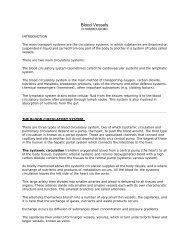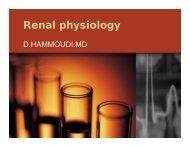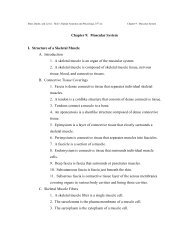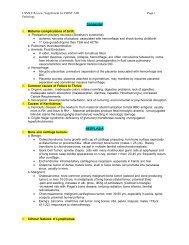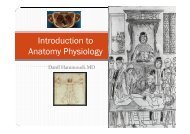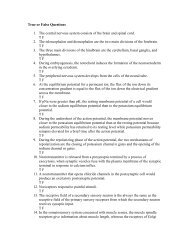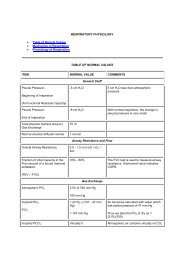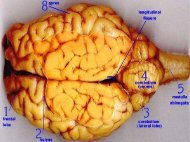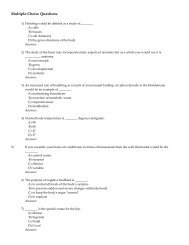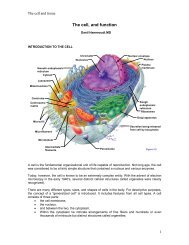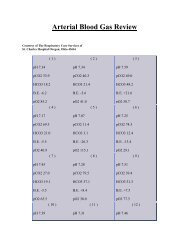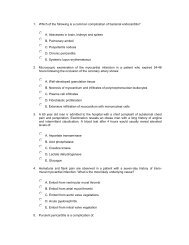Part 3 Quiz Version - Sinoe medical homepage.
Part 3 Quiz Version - Sinoe medical homepage.
Part 3 Quiz Version - Sinoe medical homepage.
Create successful ePaper yourself
Turn your PDF publications into a flip-book with our unique Google optimized e-Paper software.
Cardiology – <strong>Part</strong> 3<br />
<strong>Quiz</strong><br />
6.1) While auscultating over the third intercostal space at the left sternal border (3LSB),<br />
splitting of S2 is heard during expiration, with the aortic valve (A2) coming before the<br />
pulmonic valve (P2). What is the likely cause<br />
a) Physiologic<br />
b) Aortic stenosis (AS)<br />
c) Left bundle branch block (LBBB)<br />
d) Hypertrophic obstructive cardiomyopathy (HOCM)<br />
e) Electronic right ventricular pacemaker<br />
6.2) An atrial septal defect (ASD) would likely cause which of the following when<br />
auscultating at 3LSB<br />
a) Splitting of S2 during inspiration<br />
b) Splitting of S2 during expiration<br />
c) Fixed splitting of S2 during inspiration and expiration<br />
d) Mid-systolic murmur with no splitting of S2<br />
e) Random splitting of S2 dependent on heart rate<br />
7.1) What is the lowest grading of systolic murmur (Freeman-Levine system) that is<br />
associated with a palpable thrill<br />
a) 2<br />
b) 3<br />
c) 4<br />
d) 5<br />
e) 6<br />
7.2) Aside from the pulmonic ejection sound, which of the following is true of<br />
pathological auscultatory findings during inspiration<br />
a) Left-sided findings decrease in intensity<br />
b) Left-sided findings increase in intensity<br />
c) Right-sided findings decrease in intensity<br />
d) Right-sided findings increase in intensity<br />
7.3) Which of the following would increase venous return and thus increase ventricular<br />
preload<br />
a) Passive declination (de-elevation) of the legs<br />
b) Going from a squatting to standing position<br />
c) Placing a cold pack on the face<br />
d) Valsalva maneuver<br />
e) Muller maneuver<br />
7.4) Which of the following would be used to decrease systemic arterial pressure<br />
a) Sustained handgrip<br />
b) Amyl nitrite<br />
c) Methoxamine<br />
d) Phenylepherine<br />
e) Premature ventricular contractions<br />
8.1) A patient presents with a systolic murmur that does not change with inspiration.<br />
Which of the following is most likely<br />
a) Aortic stenosis<br />
b) Pulmonic stenosis<br />
c) Pulmonic regurgitation<br />
<strong>Version</strong>: 16Oct2008 Page 2 of 60



